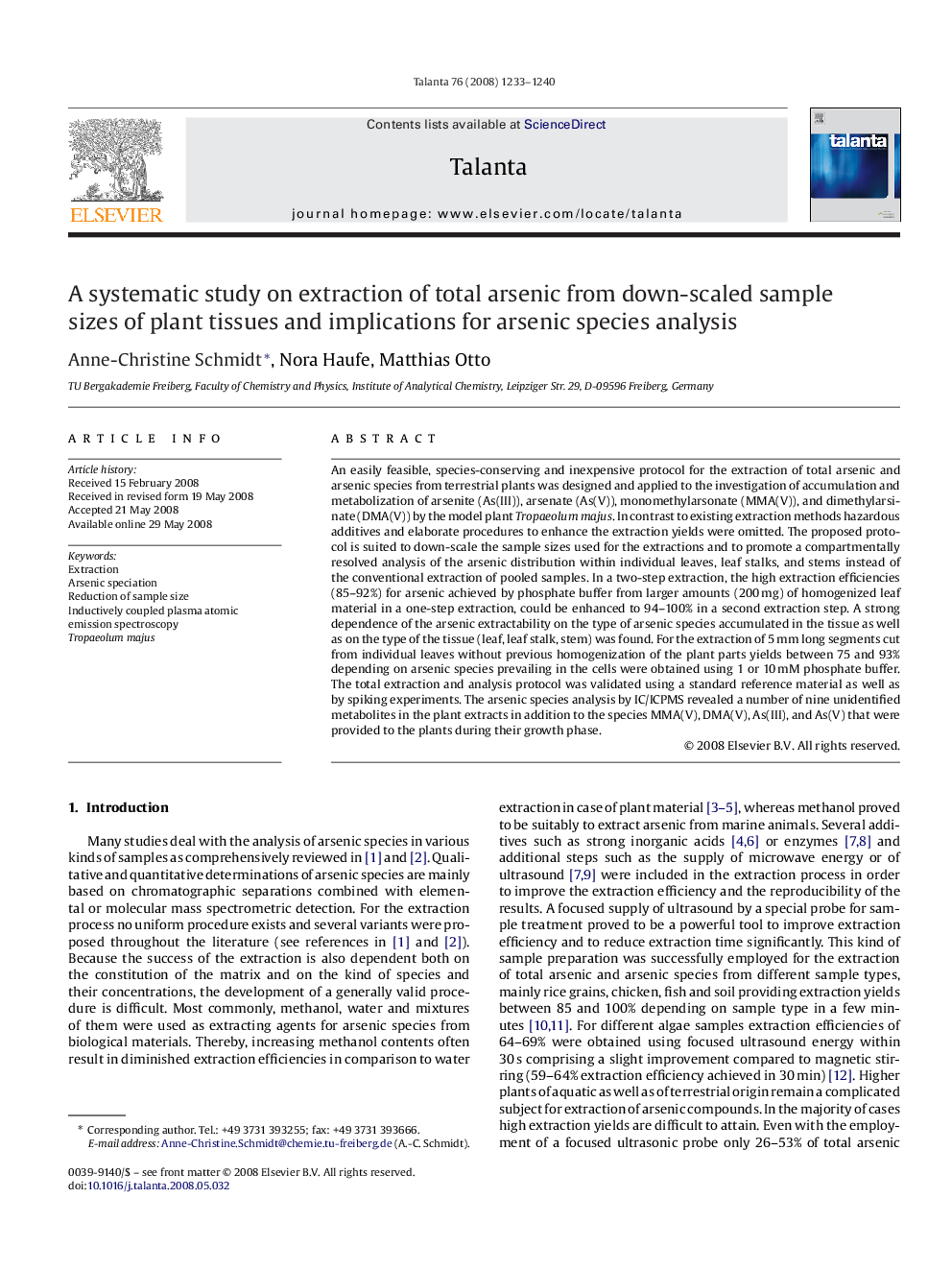| Article ID | Journal | Published Year | Pages | File Type |
|---|---|---|---|---|
| 1245465 | Talanta | 2008 | 8 Pages |
An easily feasible, species-conserving and inexpensive protocol for the extraction of total arsenic and arsenic species from terrestrial plants was designed and applied to the investigation of accumulation and metabolization of arsenite (As(III)), arsenate (As(V)), monomethylarsonate (MMA(V)), and dimethylarsinate (DMA(V)) by the model plant Tropaeolum majus. In contrast to existing extraction methods hazardous additives and elaborate procedures to enhance the extraction yields were omitted. The proposed protocol is suited to down-scale the sample sizes used for the extractions and to promote a compartmentally resolved analysis of the arsenic distribution within individual leaves, leaf stalks, and stems instead of the conventional extraction of pooled samples. In a two-step extraction, the high extraction efficiencies (85–92%) for arsenic achieved by phosphate buffer from larger amounts (200 mg) of homogenized leaf material in a one-step extraction, could be enhanced to 94–100% in a second extraction step. A strong dependence of the arsenic extractability on the type of arsenic species accumulated in the tissue as well as on the type of the tissue (leaf, leaf stalk, stem) was found. For the extraction of 5 mm long segments cut from individual leaves without previous homogenization of the plant parts yields between 75 and 93% depending on arsenic species prevailing in the cells were obtained using 1 or 10 mM phosphate buffer. The total extraction and analysis protocol was validated using a standard reference material as well as by spiking experiments. The arsenic species analysis by IC/ICPMS revealed a number of nine unidentified metabolites in the plant extracts in addition to the species MMA(V), DMA(V), As(III), and As(V) that were provided to the plants during their growth phase.
